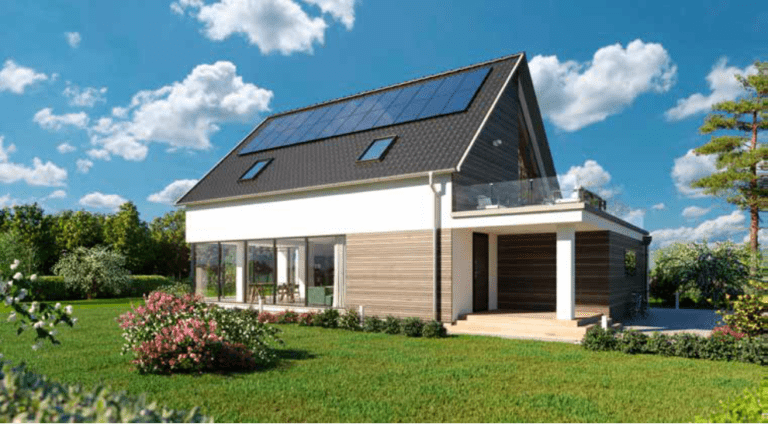
NIBE PV-T collector is an alternative, innovative, and silent heat source for use with NIBE ground source heat pumps, removing the requirement of ground or borehole collector array. The PV-T collectors produce electrical energy that can be used to operate a ground source heat pump. The circulating brine helps cool the PV-T panel on a hot day, increasing PV-T generation efficiency.
Following successful trials in homes and public sector buildings in the UK, NIBE officially launched this new technology which produces two types of energy, thermal energy and electricity, using a unique solar panel. The PV-T system builds on NIBE’s promise to continuously update its products and to make it easy to be ‘smart.’
The ground-breaking scheme is the first of its kind
The system was recently successfully installed at the University of West London. The ground-breaking scheme is considered one of the largest of its kind in the world and was made possible thanks to a £5 million public sector decarbonisation fund.
The project involved the replacement of old gas boilers with ground source heat pumps alongside 580 solar PV-T panels. The site remained active throughout the build due to prefabricated structures and the innovative PV-T design, removing the need for extensive groundworks.
“The NIBE PV-T collector is an alternative, innovative and silent heat source for use with NIBE ground source heat pumps. The installation of a PV-T array can be utilised as a natural alternative or supplement to a traditional borehole or surface collector while delivering the same levels of efficiency. It is also an excellent solution when an air/water solution is undesirable.
“PV-T panels are equipped with PV cells at the front that convert sunlight into electricity. The rear consists of a thermal heat exchanger extracts aerothermal energy from the ambient air. The operation of the heat exchanger is therefore comparable to that of an air/water heat pump, without requiring a mechanical fan. A PV-T system, therefore, works 100% silently.
“Depending on the heating requirements, they can replace traditional boreholes or ground arrays, minimising disruption and removing the need for extensive groundworks which can be impractical on some sites,” said Jonny Hancock, product manager at NIBE Energy Systems (UK).